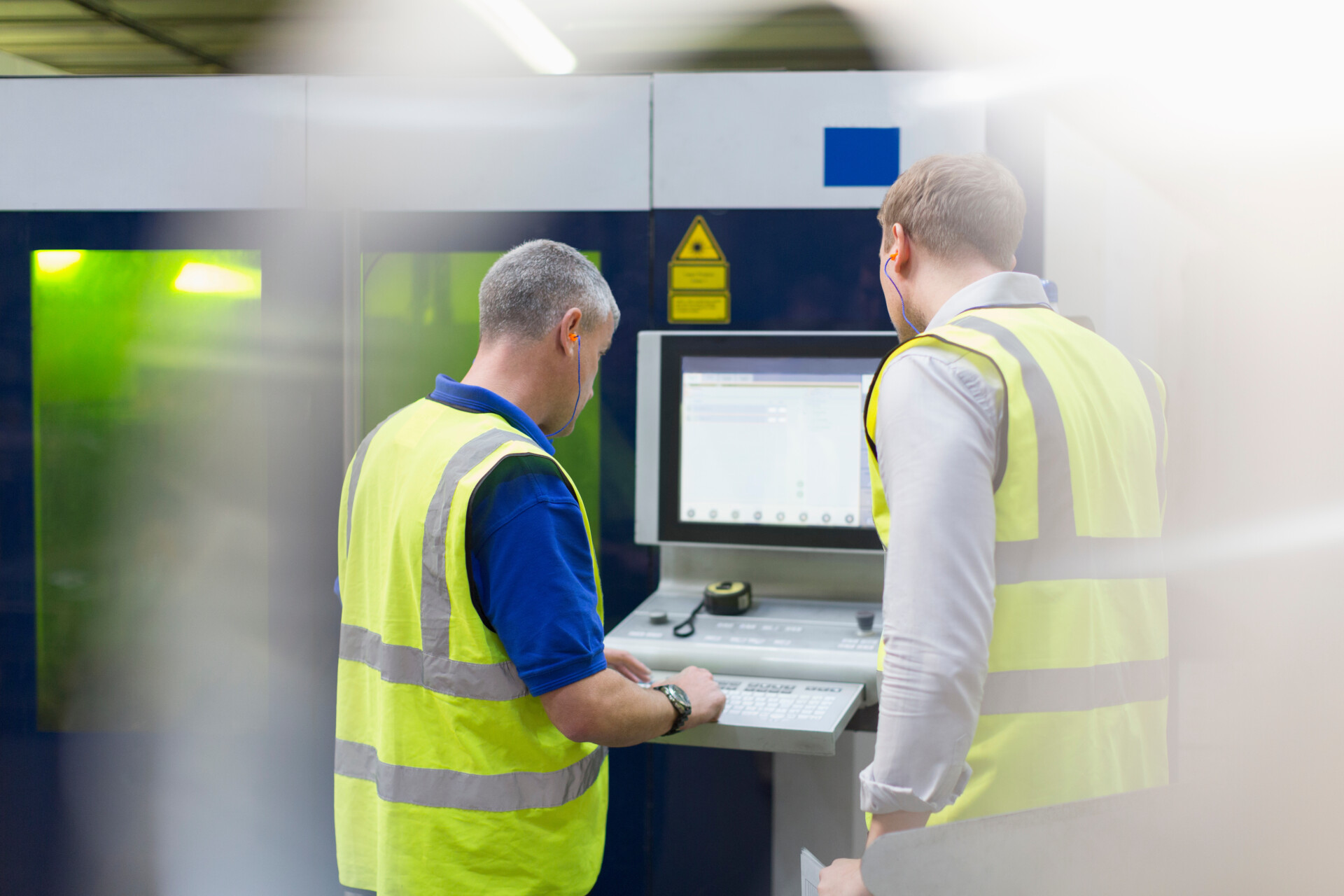

Did you know that over 98% of all microprocessors manufactured globally are used in embedded systems? First used in the 1960s for the Apollo Program by Dr. Charles Stark Draper at the Massachusetts Institute of Technology, Embedded Systems are isolated systems, at times standalone or a part of a larger assembly, explicitly designed to execute specific function(s) with the use of its hardware and embedded software (read more). Today, embedded systems are being used in numerous fields. Embedded systems have revolutionised automation and human-machine interaction, from CT and MRI in the hospital to transportation management systems, industrial robots, and interactive kiosks. Thus, they are a vital element in the transition to Industry 5.0. Although the hardware of an embedded system is quite similar to other computer systems, embedded software, on the other hand, is quite dissimilar to conventional software, and its demand is rising, especially in the wake of the impact of COVID-19 on software development outsourcing. Starting with basics, this article will shed light on Embedded Software, its scope, present state, common applications, and outsourcing its development.
What does this article have in store for you?
What exactly is embedded software?
It may seem astonishing that an average individual uses embedded software daily! We live in a world of smart everyday objects, from clothes to watches, pens and furniture, where embedded software plays a vital role. The common notion is that embedded software is just software for small computers. This definition does not do justice to its importance or scope. Prof. Edward A. Lee – a world-renowned computer scientist, electrical engineer, and author – described this view as arrogant and naive. Embedded software is much more, these are “software designed with the principal role of enabling interaction with the physical world”.
Simply put, ‘Embedded software is specialized programming for specific hardware (an embedded system) designed to perform an explicit function in the physical world, repeatedly’.
Embedded software development differs quite a bit compared to application software development. For example, engineers who develop embedded software are rarely just computer scientists. They are experts in software applications and understand the target architecture with which they have to work. It requires a highly skilled team that best understands computers and the physical world. Some recognisable examples of embedded software applications are systems on wireless headphones, motion detection systems in security cameras, image processing systems in medical imaging devices, the system tracking fitness on a smartwatch etc. More examples are discussed in the section on common examples of embedded software. But before that, let us look at the stats and projections of its market size.
Global Embedded Software Market: Stats and Projections
Since it first appeared in the 1960s, the market for embedded software has grown severalfold and is expected to keep its upward trend going in the coming years. According to a report by Global Market Insights, the embedded software market is expected to grow from $ 13.5 Billion in 2020 to over USD 21.5 billion in 2027. These are conservative figures! Automotive (>15%), real-time systems (>8%) and real-time operating systems (>8%), along with other segments such as consumer electronics, manufacturing, healthcare, military & defence, and IT and telecommunication, would be the major growth drivers. Europe is expected to maintain its 16% to 18% share in the global embedded software market. According to the latest reports, the European embedded software market exceeded USD 2.5 billion in 2020 and is expected to exceed USD 3.64 billion by 2027. Curious as to why the demand for embedded software is rising? The next section will outline the contributing factors to it.
Embedded software: Why is its demand increasing?
Embedded software brings several advantages, such as powerful performance, small form factor, long lifecycle, and economical and low maintenance requirements. Due to this, its scope is expanding rapidly, and its demand is surging. In addition to its advantages and emerging technological trends, such as the Internet of Things (IoT), Big Data, Smart and connected automobiles and homes, which are integrating with people’s everyday lives worldwide, further boost its demand. Other specific factors contributing to the rising demand are the following:
- Increasing demand for consumer wearable electronics: The market size of wearable electronics is projected to grow by USD 41.24 billion by 2025 (read more).
- Growing industrial automation and IIoT, especially in developing countries: The expected market size of industrial IoT is USD 263.4 billion by 2027, a staggering growth of more than 16% CAGR from 2021 (read more).
- Increasing demand for embedded OS in automobiles: This segment exceeded USD 4 billion in 2020 and is poised to be valued at over USD 10 billion by 2027 as we move towards electric mobility (read more).
- Increasing Applications in the connected medical device market: As early as 2025, this segment is expected to be valued at over USD 1.1 Trillion (read more).
- Growing adoption of AI and machine learning in embedded software, which are giving birth to advanced technologies such as embedded machine learning (read more).
Embedded software would be an integral part of devices in all these growing sectors, and hence the future of embedded software applications is bright. However, this does not come without its challenges for companies that seek its development. Hence outsourcing the development to a specialized team is very popular and seems it would remain so in the years to come.

Common examples of embedded software performing the magic
Embedded Software in MedTech
During the COVID-19 pandemic, the National Health Services (UK) deployed remote devices to monitor infected patients and those with existing chronic conditions. Remote monitoring devices equipped with embedded software recorded the patients’ vitals and alerted the patient and the concerned authority if vitals were beyond or under acceptable limits. Such devices were available before the pandemic but were used by few. This necessity-based express adoption and its success have opened a ‘whole new world’, reads the NHS website. The market size of remote patient monitoring is expected to surpass USD 3.23 billion by 2025, adding to the growing embedded software demand. Other common MedTech devices equipped with embedded software are CT, MRI, or X-ray, which are equipped to process signals and images to provide clearer images to the doctor for diagnostics. Embedded systems and software are also being increasingly used in the mechanisms built for robotic surgeries. It has gained a lot of momentum lately. Another example is the use of auditory devices such as an electronic stethoscope.
Embedded Software in Manufacturing
Embedded systems and software have two major applications for manufacturing, machine control and machine monitoring. This is an essential part of industrial automation and industrial IoT. Using embedded software, real-time monitoring of temperature, vibration, flow rate, analytics, and other variables can be recorded, displayed and also used as input parameters for machine controls to adjust the parameters as required,
Embedded Software in Logistics
The logistics sector is being transformed with the use of embedded technologies. Competitive and tough markets, in addition to consumers’ demand for faster and cheaper deliveries have prompted logistics companies to seek out-of-the-box solutions to spear ahead of their competitors. Embedded software has been used in autonomous robots and automated guided vehicles, enabling them to receive and execute instructions to move certain item(s) from one place to another in the warehouses. Big tech companies like Amazon have also implemented autonomous delivery drones with advanced embedded software, artificial intelligence and machine learning. Additionally, embedded software solves challenges such as effective fleet management, vehicle diagnostics and management, driver safety compliance, etc.
Embedded Software in Mobility
By 2035, the European Union proposed an effective ban on fossil-fuel cars. This is a step towards a more sustainable mobility solution with embedded systems at its core, justifying increasing embedded software demand. Even in conventional fuel vehicles, embedded software is at the whelm of safety systems such as Traction Control, Antilock Braking System, and Electronic Stability Control. Traffic Alert and Collision Avoidance Systems on aircraft and in road cars also use embedded software. The micro-mobility solutions, such as electric scooters, also have embedded software are their heart, due to which they could be safely rented out through mobile applications. Dubai Metro is another great example of the reliable and efficient functioning of embedded software, as thousands of passengers commute in these fully automated metros. Other advanced and automated mobility solutions, such as Hyperloop, use more complex embedded software, yet have stood the test of efficiency and reliability.
Embedded Software in Smart Homes
Smart homes are not something of the future but of today! Embedded software can be found in several household appliances such as TVs, washing machines, heating systems, gas &/or electricity meters, autonomous vacuum cleaners, and in-home displays. These devices have become so versatile that, in some cases, once the user selects the mode of operation, they manage themselves and carry out the required operation without any human oversight over an extended period.

Why outsourcing embedded software development is popular?
As you read, embedded software development is a highly sought-after service and will continue to boom in the coming years. Embedded software developers require skills beyond just computer science; hence they are not easy to find, and numerous vacancies remain unfilled in this area. For a business, to constitute a team just for developing a single or few software solutions would simply incur higher costs and require a large effort. Additionally, in the end, for most cases, the solution would be limited to the expertise of a handful of people, if not less. Here are some reasons why outsourcing is popular and an effective way for embedded software development:
- Outsourcing embedded software development would save time, not just in software development but also in talent hiring and onboarding.
- Outsourcing to an organization with a background in research and business would ensure the use of the latest technologies and platforms for the resulting product.
- Outsourcing would be more cost-efficient, and better budgetary control could be enforced.
- Outsourcing would ensure that experienced professionals develop the required software and guarantee a working project delivery.
- Outsourcing would help mitigate risks, as the contractor must deliver a working project within the agreed cost and time frame.
- Outsourcing would provide better options for 24/7 technical support, depending on the agreement between the firms
Hence it’s safe to say, that outsourcing embedded software development is going to remain a popular and effective option for quite some years to come.
Looking to outsource software development?
We have just what you need!
Our full services range from custom software development, hardware development, end-to-end engineering, and specialized research & development. As a company born out of an R&D project, we at DAC.digital work on the intersection of technology, science, and business. This approach enables us to ensure that we deliver the most cutting-edge yet business-efficient solutions to our illustrious clientele. Our experienced and skilled team of engineers and problem solvers has delivered value across IoT, hardware, embedded systems, big data, machine learning, DLT, DevOps, and software engineering. We can address the embedded software demand for your business.
As an organization, we value the importance of our next mutual project for your organization. Hence, a dedicated team comprising of high-performance technology experts is set up right at the onset of project discussions. This ensures end-to-end coverage of your requirements and a guarantee for successful project delivery.
Wondering what next?
- You could go through the Case Studies of some of our successful projects.
- You could look at our Expertise: Blockchain Technology | Data Management | IoT Solutions Industries 4.0 | Logistics systems | Smart Agriculture.
- You could look at our detailed Offer of Services.
We hope you found the article insightful. We welcome your comments, suggestions, and point-of-view, it would help us improve our next articles.
Dr. Yash Chawla
Content Marketing Advisor, DAC.digital | Asst. Professor, Wroclaw Tech.
Yash is a researcher, academician, and consultant in the field of marketing and innovation management, with keen interest in marketing communications, creative thinking, and sustianable development. He strives to make a positive difference for students, professionals and the society.





